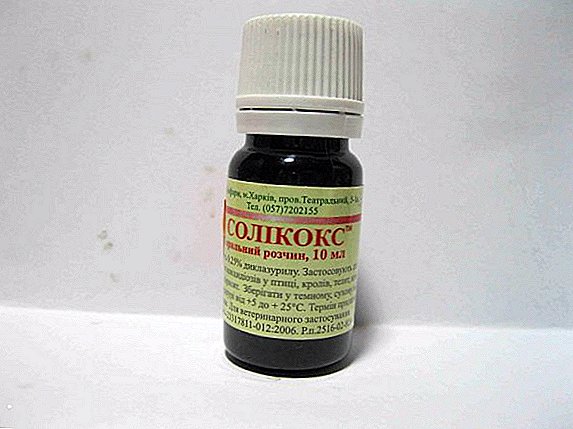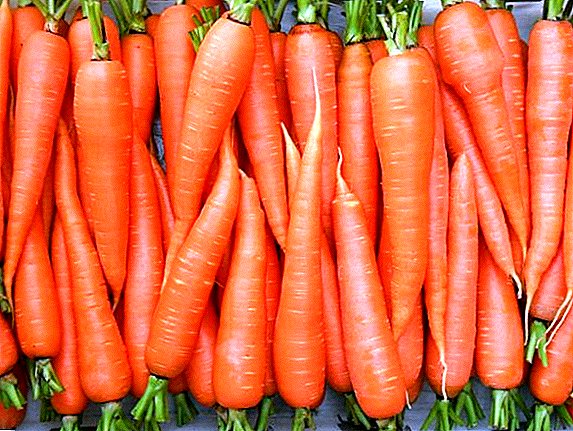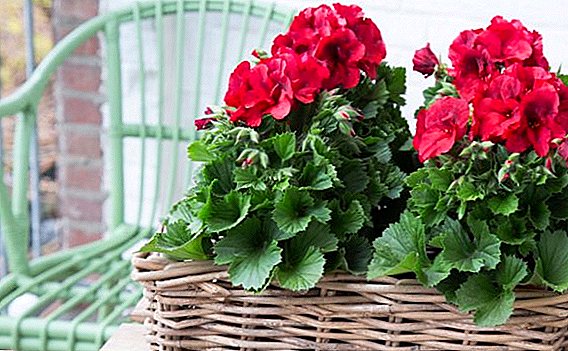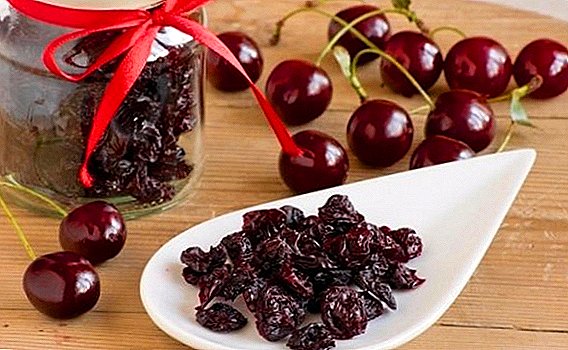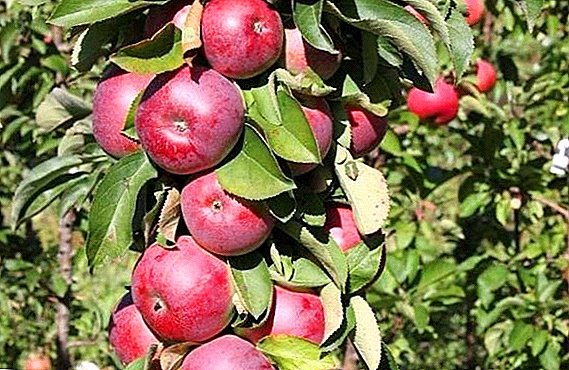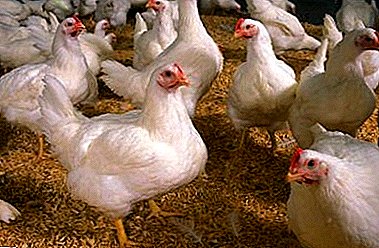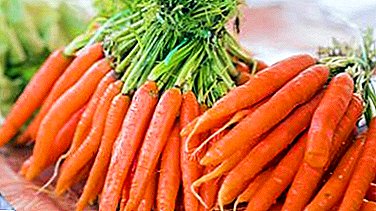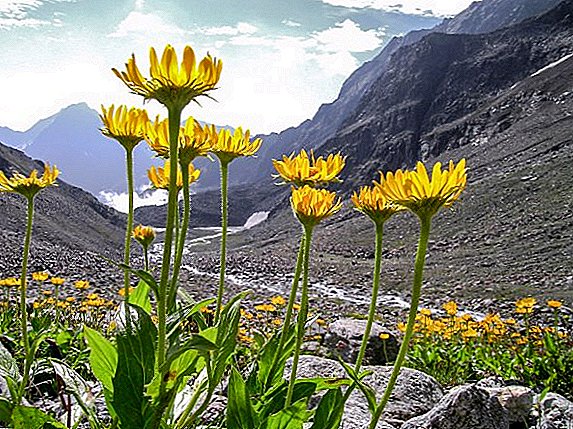 Many plants are used in medicine because of their medicinal properties. Arnica mountain grass, which will be discussed in this article, has many medicinal properties and finds its application not only in traditional medicine, but also in traditional, as well as in cosmetology.
Many plants are used in medicine because of their medicinal properties. Arnica mountain grass, which will be discussed in this article, has many medicinal properties and finds its application not only in traditional medicine, but also in traditional, as well as in cosmetology.
Brief description and places of growth
Arnica belongs to the Astrovich family and is a perennial herb. The stem of the plant reaches a height of 50-60 cm, it contains one or two pairs of fairly small leaves. The root system is represented by one thick rhizome and many small lateral roots. Flowering occurs in June - July. Flowers look like daisy, yellow in color, with an orange tint. Grows mainly in mountainous areas. Many arnica plantations in the Carpathians: in coniferous forests, on mountain lawns, at least - on the slopes of the mountains. In folk medicine, arnica mountain flowers are used, less often roots are used. 
Did you know? The name "arnica" comes from the ancient Greek "Ptarmika", which means "sneezing". In those days, this plant was named in this way because of its property to cause irritation in the nose and sneezing.
Chemical composition
The main active ingredient, due to which arnica is widely used as a drug, is arnitsin. Its content is about 4%, according to physical signs - it is a bitter dye. It consists of three components: arpidiol, faradiol and saturated hydrocarbon. In addition, the flowers contain essential oil, tsinarin, lutein, organic acids (lactic, malic and fumaric), tannins, vitamin C, inulin, fructose and sucrose.
The roots contain unsaturated hydrocarbons, organic acids (formic, angelic and isobutyric) and essential oil. 
Medicinal properties
Arnica has many healing properties, since its chemical composition is quite diverse. First of all, preparations from the flowers of this plant have a stimulating and tonic effect in relation to the nervous system (and in large quantities - and sedative), relieve seizures, correct the work of the cardiovascular system. The flowers are also able to expand the vessels of the brain, in obstetrics are used as a styptic. Arnica tincture has a choleretic property, its long-term use reduces the level of cholesterol in the body. Indications for use arnica is found in the following disorders:
- bleeding of internal organs;
- gastrointestinal tract diseases;
- disorders in the cardiovascular system;
- hypertension;
- increased nervous irritability;
- myocarditis;
- angina pectoris
In addition to mountain arnica, a positive effect on the state of the cardiovascular system also has a hellebore, oregano (oregano), chervil, cumin, rokambol, cantaloupe, loch, hops, oxalis, calendula and buttercups.

Did you know? People call this plant "barannik", "lamb grass", because its leaves and baskets after flowering are similar to sheep's wool. And in Belarus, it is known as "swimsuit" or "Kupala grass", in honor of the holiday of Ivan Kupala, during which it begins to bloom.
Use in traditional medicine: recipes
From the description it can be seen that Arnica is used for medicinal purposes quite widely. Preparations with it are used both internally and externally.
The juice
The juice is squeezed from the fully revealed flowers of arnica. It is recommended to consume with honey. When bleeding, to stimulate cardiac activity, to reduce the pressure in 1 tbsp. l honey add 30 drops of juice, take before meals, 2-3 times a day. Juice is also prescribed for epilepsy: add 40 to 60 drops in a spoonful of honey. Apply it externally to the treatment of skin ulcers, burns, boils and frostbite. 
Infusion
Infusion is made from flowers. A teaspoon of arnica flowers is poured with two cups of hot water and infused for about two hours, then filtered. It should be consumed within two days.
For outdoor use, for example, to rinse the throat and mouth, the infusion is prepared more concentrated. For the same amount of water take 3 spoons of flowers. 
Decoction
The decoction is prepared from the root of the plant. To do this, two tablespoons of chopped root pour two cups of water, bring to a boil and boil for about 5 minutes. Next, insist about an hour. Drink it 1 tbsp. l three times daily before meals. Used such a decoction to reduce the pressure. 
Tincture
To prepare the tincture, sliced arnica is poured with alcohol (70%) in a ratio of 1:10, infused for about two weeks without sunlight, and then filtered. It is used in gynecology with heavy menstrual bleeding, has a choleretic effect. In folk medicine use with stomach ulcers, convulsions, bronchitis. 
Compress
Compresses are prescribed for rashes on the skin, bruises, boils, burns and frostbite, as well as sprains and muscle sprains. For a compress, three small spoons of flowers are poured with two cups of boiling water and left for a couple of hours, then filtered. In this infusion, a cotton swab is moistened and applied to problem areas twice a day for 20-50 minutes.
Important! For injuries and bruises, massage with oil containing arnica extract.

Application in cosmetology
Arnica is used in cosmetology as a means of providing anti-inflammatory effect. A decoction of flowers wipe the skin with acne, acne and redness. The extract from it is added to cosmetics for the care of teenage and young skin. Cosmetics with the addition of this herb also perfectly tones the skin and reduces inflammation. Her extracts are also added to hair care products and deodorants.
Thanks to its beneficial properties, radishes, pears, plums, mountain ash red, iceberg lettuce, onions, silver goof, sauerkraut, baby soap (saponaria) and pineapple, as well as mountain arnica, are used as cosmetics.

Preparation of medical raw materials
Flowers are collected in the summer, at the beginning of flowering. With a later collection, the petals may peel off during drying. This should be done in dry weather, after the dew has dried. Ensure that there are no eggs and larvae of parasites on the petals. They should be dried as quickly as possible, at a temperature of 55-60 ºС. Dried material should be stored in an airtight container, in a dark cool room. Unlike flowers, roots are dug out in the fall. Dry them in the same way. They retain their properties for 5 years.

Contraindications and harm
Mountain arnica has such contraindications:
- pregnancy and lactation;
- increased blood clotting;
- individual intolerance.
It must be remembered that arnica - toxic plant and use it with caution, strictly following all dosages. With an overdose, nausea, vomiting, abdominal cramps, frequent urination, shortness of breath. 
Important! In case of poisoning, cardiac activity is disturbed, even death is possible.A detailed description of the therapeutic properties of mountain arnica and the ways of its use, described in the article, will help determine the feasibility of using it in your case. However, given its toxicity, yet strongly We recommend to consult a doctor before using it.


